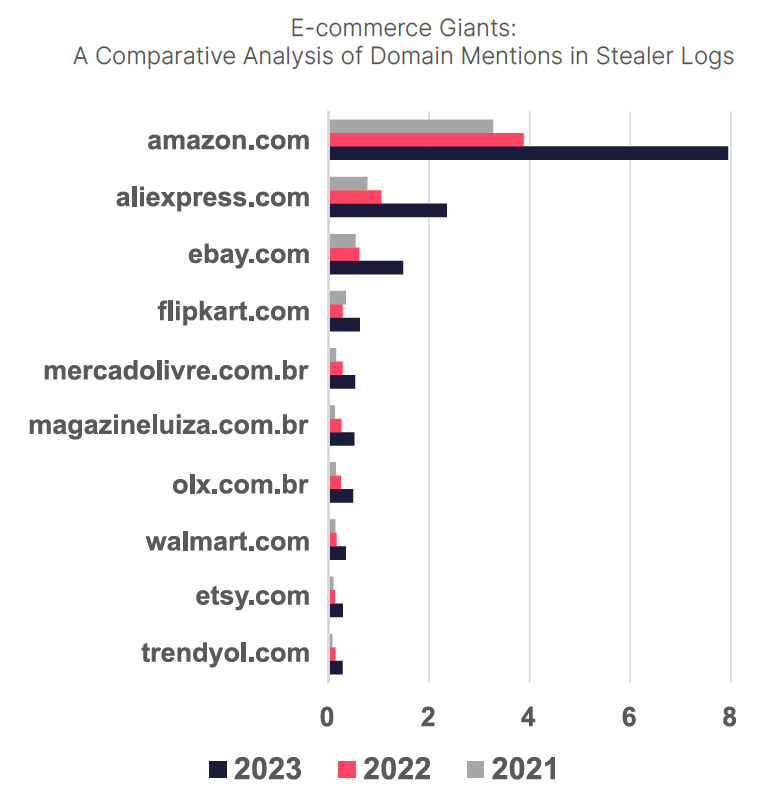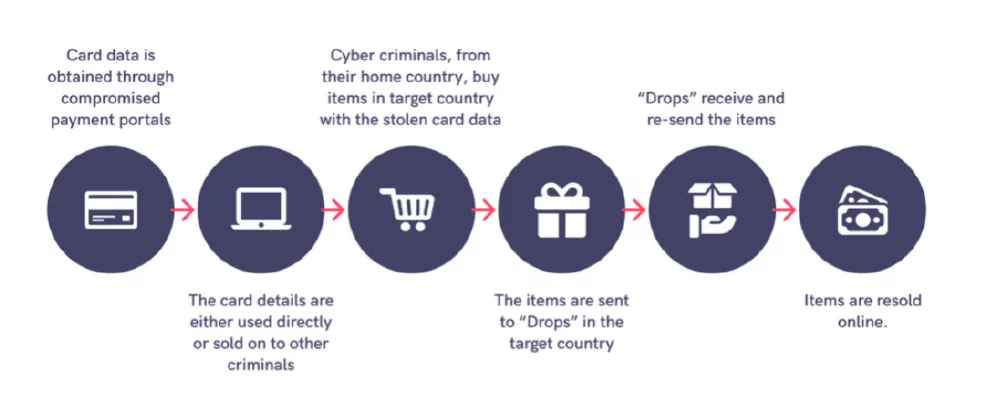In recent years, the e-commerce industry has become a prime target for cybercriminals, making e-commerce security more critical than ever. According to the SOCRadar report, phishing, credit card fraud, and exploitation of vulnerabilities are the most prominent e-commerce security threats. The advent of sophisticated malware types like ‘stealer,’ which can harvest user credentials, has added to the complexity of e-commerce security issues.
Alarming Increase in Phishing Attacks
The SOCRadar report highlights an unprecedented spike in phishing attacks, with more than 300,000 incidents recorded in December 2021 alone, representing a threefold increase from less than two years earlier. This surge underscores a crucial aspect of e-commerce threats and their rapid evolution.
A notable finding in the report is the shift towards HTTPS protocols by nearly 80% of threat actors by 2023, complicating the detection of malicious sites. This adoption of HTTPS, once a hallmark of secure sites, now presents new challenges for e-commerce security.
The Rise of ‘Stealer’ Malware
 The clustered bars illustrate the increasing number of mentions for some of the world’s leading e-commerce websites in stealer logs, as monitored by SOCRadar.
The clustered bars illustrate the increasing number of mentions for some of the world’s leading e-commerce websites in stealer logs, as monitored by SOCRadar.
SOCRadar’s analysis revealed nearly 5 billion logs from a malware type known as ‘stealer,’ containing multiple credentials, many of which belong to e-commerce websites. This proliferation of stealer malware is a testament to the increasing sophistication of e-commerce security threats.
Analyzing E-Commerce Security Issues: Data-Driven Insights
The report identifies a rise in the exploitation of vulnerabilities and the use of impersonating domains. E-commerce is one of the most targeted industries by threat actors using such domains, with a significant shift in their registration practices and domain extensions.
Credit Card Fraud and Dark Web Dynamics
 The global journey of stolen credit card data
The global journey of stolen credit card data
SOCRadar uncovered that threat actors are actively selling and sharing gift card code generators and credit card checker software for various e-commerce websites. This finding highlights the multifaceted nature of e-commerce security issues, extending into the dark web.
Solutions to Counter E-Commerce Security Threats
The report advocates for robust cyber defenses like multi-factor authentication and the utilization of threat intelligence and brand protection tools. These solutions are critical in mitigating cybersecurity risks.
Staying informed about the latest threats and regularly updating security protocols is vital. The report stresses the need for e-commerce businesses to adopt proactive security measures to stay ahead of cybercriminals.
Future Landscape of E-Commerce Security
As the e-commerce landscape continues to evolve, so do the threats. The report suggests that businesses need to be dynamic in their e-commerce cybersecurity approach, continually adapting to new challenges.
The SOCRadar E-Commerce Cyber Bible provides a critical analysis of the current state of e-commerce threat landscape. With detailed data on phishing attacks, the rise of sophisticated malware, and the challenges posed by HTTPS adoption by threat actors, the report is a call to action for businesses to strengthen their security posture. By understanding these threats and implementing effective cybersecurity solutions, businesses can safeguard their digital assets and ensure a safer online environment for their customers.
The post Surging Tide of E-Commerce Security Threats: Insights from SOCRadar’s Report appeared first on SOCRadar® Cyber Intelligence Inc..
Article Link: Surging Tide of E-Commerce Security Threats: Insights from SOCRadar's Report
1 post - 1 participant
Malware Analysis, News and Indicators - Latest topics



Post a Comment
Post a Comment